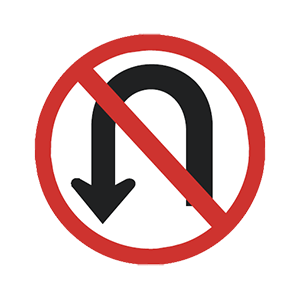2025 Maryland Permit Test 23
The following questions are from real DMV written tests. These are some of the actual permit questions you will face in Maryland. Each permit practice test question has three answer choices. Select one answer for each question and select "grade this section." You can find this button at the bottom of the drivers license quiz. For a complete list of questions and answers for Maryland please visit https://cheat-sheets.dmv-written-test.com/en/maryland/car.
Number of Tests
Number of Question
Passing Score
17. You should not start across an intersection if you know you will block the intersection when the light turns red:
Explanation
Even if the signal is green, you must not enter an intersection unless you can get completely across before the light turns red. If you block the intersection, you can be cited.
18. "No passing zone" signs tell drivers:
Explanation
If you come across a "No passing zone" sign, it is not legal to pass in the indicated area. You are likely driving in an area with restricted visibility where it would be unsafe to pass another vehicle.
20. On a multilane road, a dashed yellow line next to a solid yellow line means:
Explanation
Where there are both solid and dashed yellow lines between lanes of traffic, only traffic directly next to the dashed line may cross the centerline to pass. Drivers next to the solid line may not pass.
21. When in a vehicle, wear a seat belt:
Explanation
Maryland Motor Vehicle Law requires that the driver and the front seat passenger must always wear a seat belt. In addition, any individual under the age of 16 must wear a seat belt or be restrained in a child safety seat, regardless of seating position.
22. When changing lanes:
Explanation
Before changing lanes, you should check your side mirrors and look over your shoulder to make sure it is safe to proceed.
23. Blind spots are:
Explanation
When changing lanes, look over your shoulder in the direction you plan to move. Check for obstructions near the rear corners of your vehicle. These areas are called “blind spots” because you cannot see them by using your mirrors.
24. The best way to avoid a dangerous situation while driving is to:
Explanation
Always be aware of what is happening around your vehicle. Constantly observing your surroundings to the front, sides, and rear of your vehicle will help you see problems that may require you to change speed or roadway position.
25. In rainy weather, you should be most careful when turning or stopping:
Explanation





